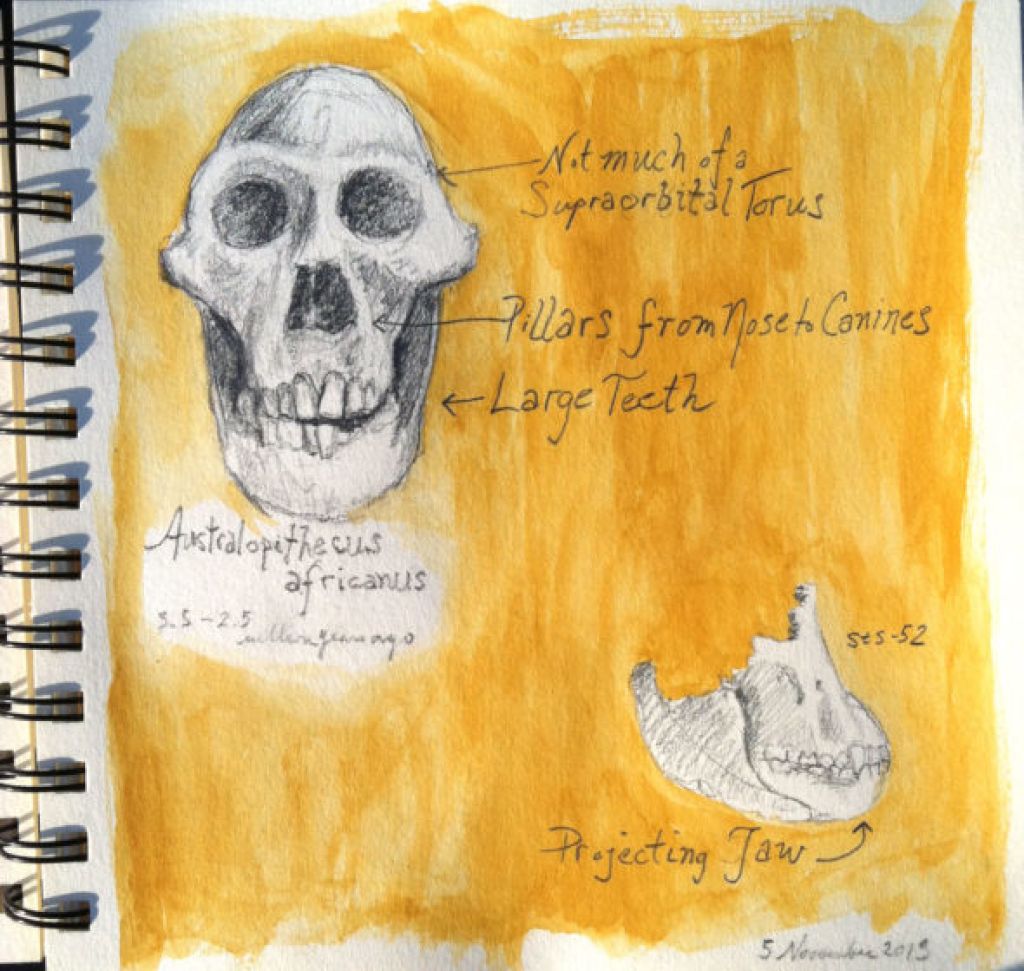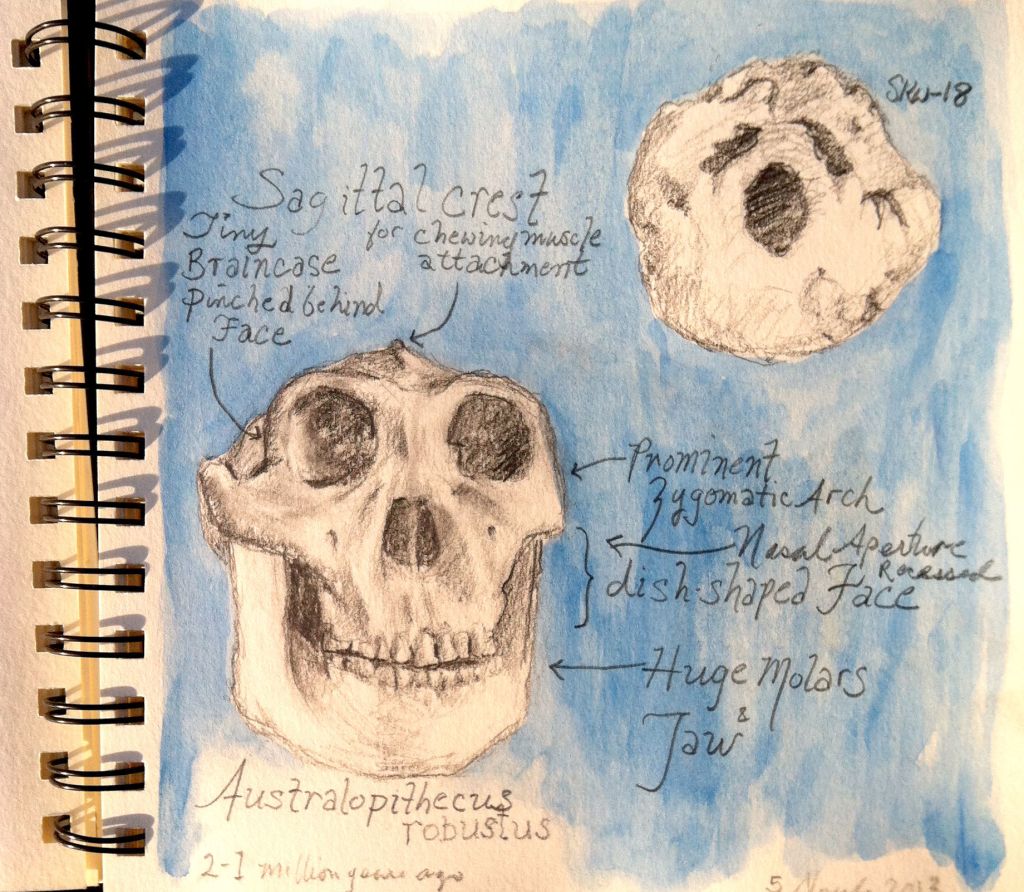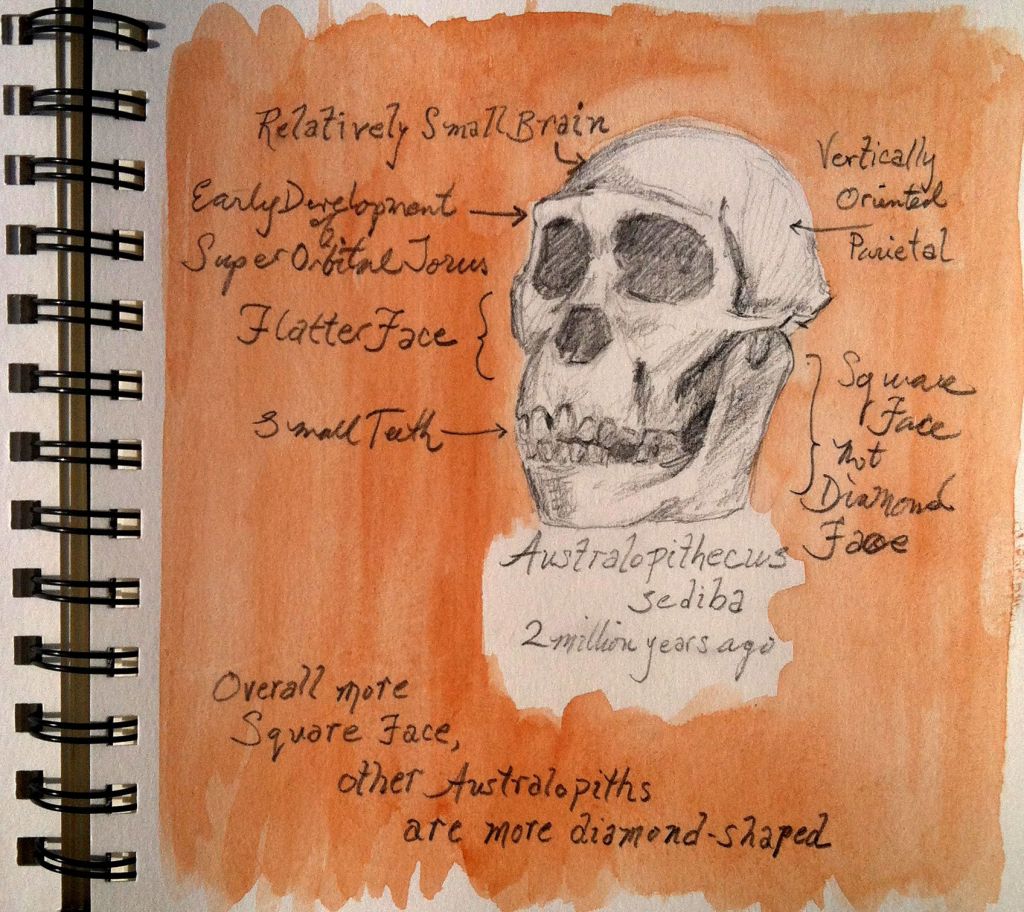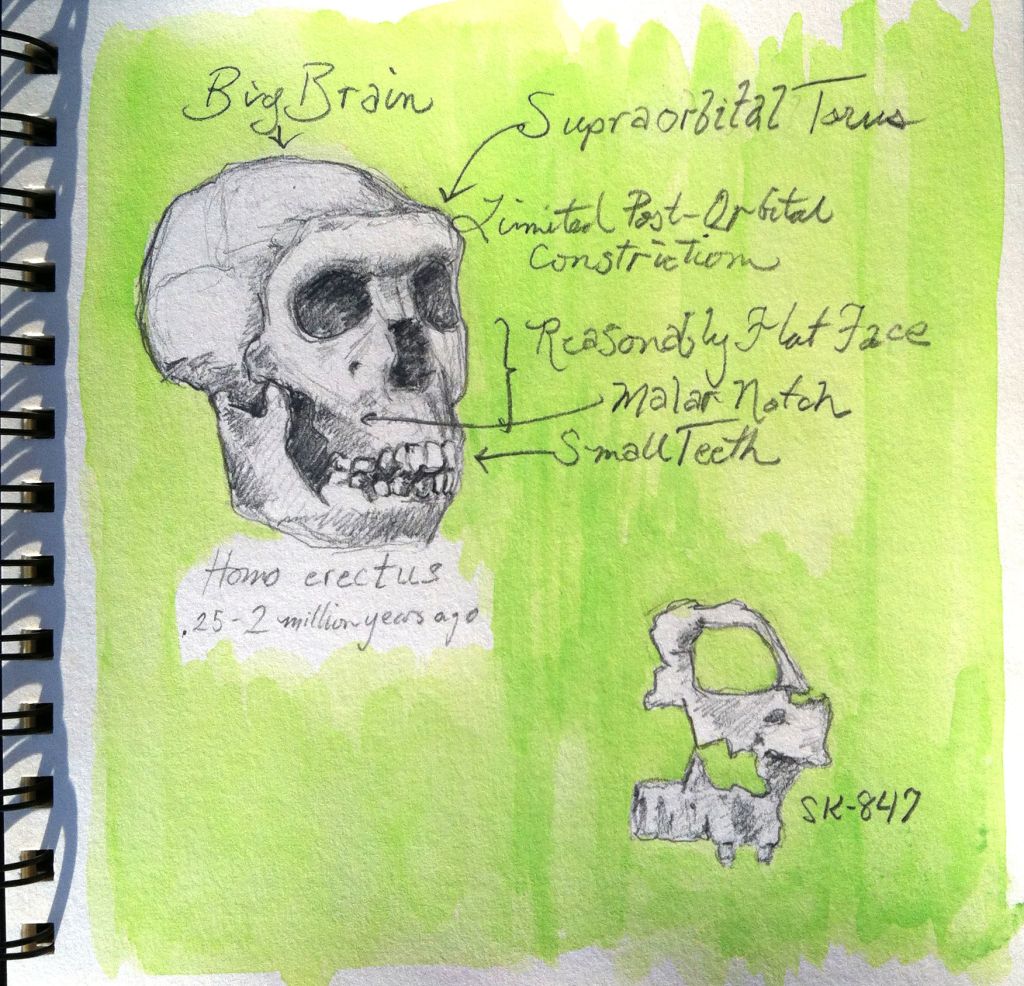Know Your Hominid Skulls
As scientists work to identify and catalog the now more than 800 hominid fossils recovered on the Rising Star Expedition, they pull from a body of knowledge accumulated over decades in their field.
An intimate knowledge not only of broad principles but of specific specimens around the world is their constant reference as each piece is brought to the tent marked “SCIENCE.”
While it’s entirely possible that somewhere in the cave below, hidden under dirt and other bones lies a perfectly intact skull, so far the the team is working with pieces brought up individually and carefully fitted together by Peter Schmid, an expert in reconstructions who gave Lucy her more accurate reassembly in the 1980s.
Peter was aided in his skull work last week by Darryl de Ruiter of Texas A&M University, who carefully examined every skull fragment and individual tooth in-hand and under a powerful digital microscope. At either scale, he looks for specific traits that when taken together help identify the species behind the pieces.
Here in South Africa, there are four main hominid species that have been discovered. The following sketches attempt to illustrate the tell-tale skull characteristics of each, as described to me by Darryl over lunch on his last day in camp.



